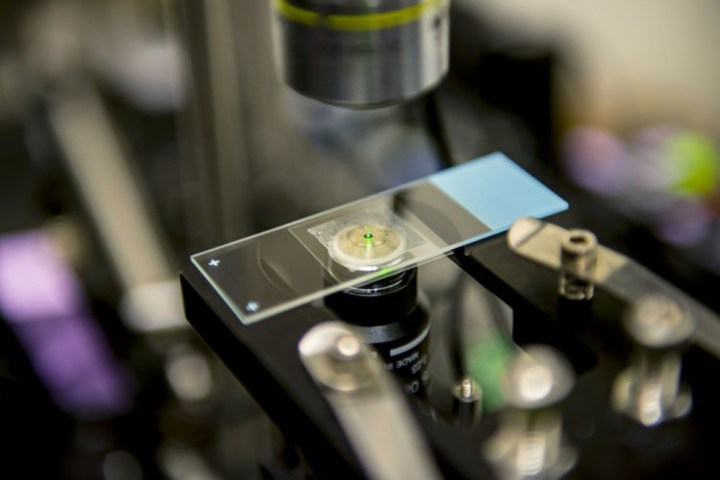
While the breakthrough certainly wasn’t made to satisfy evil villains the world over, the technology does have the potential for a wide range of applications. According to a published announcement from UW itself, the experimental tech may allow for more efficient information processing, possessing the ability to prevent overheating in microchips by cooling specific parts. Moreover, the university posited that scientists could also use it to “precisely cool” portions of cells as they divide or repair themselves, allowing for an incredible opportunity to see exactly how cells work.
“There’s a lot of interest in how cells divide and how molecules and enzymes function, and it’s never been possible before to refrigerate them to study their properties,” says senior author and UW assistant professor of materials science and engineering Peter Pauzaskie. “Using laser cooling, it may be possible to prepare slow-motion movies of life in action. And the advantage is that you don’t have to cool the entire cell, which could kill it or change its behavior.”

Concerning the laser itself, the University of Washington decided on using infrared due in large part to the fact that visible light has the potential to harm or “sunburn” cells. By first taking material typically found in commercial lasers, the University of Washington says it “essentially ran the laser phenomenon in reverse.” During the test, the team used the infrared laser to highlight a single microscopic crystal suspended in a water sample. Once illuminated, the crystal gave off a unique reddish-green glow visible to the naked eye which contained slightly more energy than light it absorbed. Moreover, the resulting high-energy glow actually removes heat from the crystal, as well as its surrounding water.
“The real challenge of the project was building an instrument and devising a method capable of determining the temperature of these nanocrystals using signatures of the same light that was used to trap them,” says lead author and Intel Corp. employee Paden Roder.
UW’s testing only demonstrated the laser’s ability on a single nanocrystal, a process which proved to be wildly energy intensive. In order to excite multiple crystals, Pauzaskie says an incredibly high amount of laser power would be required, but that the team intends to continue research on the tech to find a way to make it more efficient. Ideally, UW’s laser could one day be used to cool high-powered lasers (the normal, heat-producing type), which can overheat or melt down.
Funded by the Air Force Office of Scientific Research and the University of Washington, the study’s complete findings will be published in the Proceedings of the National Academy of Sciences this week.
Editors' Recommendations
- Researchers have simulated a virtual universe, and you can download it for free
- An infinite loop: New research suggests the universe may be a closed sphere
- Stanford researchers have taken us one step closer to a universal flu vaccine


